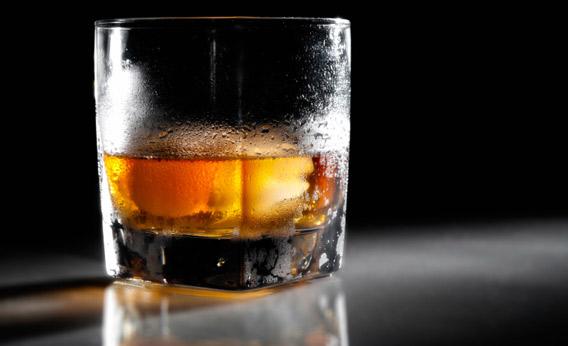 A glass of scotch whisky.
A glass of scotch whisky. Photo by Oleksandr Pekur/Thinkstock/iStockphoto.
Errol Flynn famously said he liked his women young and his whiskey old, and indeed most high-end whiskeys have been aged for 10 to 20 years. That would seem to make launching a new brand of top-shelf whiskey a difficult proposition. Do startups have to wait years and years before selling their first bottle of the good stuff?
It depends on the company and on the type of whiskey. As a general rule, older whiskeys do tend to be costlier thanks to their rarity. The oldest blend in the world, for instance, sat for 70 years in a Scottish cellar before being sold in 216 ?hand-blown, tear-shaped crystal decanters?with silver stoppers? in 2010. But not all whiskeys need to mature for quite so long to be considered top shelf. In order to impress, a whiskey must demonstrate a complex, slightly woody flavor, which it acquires from the cask in which it?s stored. In warmer climates such as Kentucky and Tennessee, wooden barrels release their savor more quickly than in cooler places: Some premium American bourbons and ryes take only five years to mature. On the other hand, Scotch whisky and Irish whisky are produced under cooler conditions and require at least 10 years to develop the flavor associated with high-quality. (And yes, you can have too much of a good thing: Whiskey that has been overly aged, especially in poor-quality barrels, can taste prohibitively bitter or ashy.)
New and ?soon-to-be? whiskey companies have several options when it comes to aging their blends. Some choose to distill, pour, and wait. For example, Bill Samuels Sr. waited six years between the launch of Maker?s Mark in 1953 and the sale of his first batch of spirits. The whiskey had to be stored, first, in 19 hand-selected casks of white oak, which had themselves been air dried for nine months and then toasted on the inside to create a ?red layer,? which would confer on their contents caramel notes and a particular amber color. (Most whiskey starts off clear, but during this so-called ?charring? stage of coopery, the caramelization of tannins and wood sugars within the barrel staves gives the interior of the casks a ruddy glow, which over time is absorbed by the whiskey.)
Less patient companies can buy ?sourced? whiskey and sell it until their own product matures. The High West Distillery in Park City, Utah, which opened its doors in 2009, is up front about the fact that it is curating spirits from distilleries around the country while its home-made blends of rye whiskey age in warehouses nearby. The new Louisville-based small batch bourbon company Angel?s Envy? mixes pre-aged selections from a local distillery then stores the blends for three to six more months in imported ruby port casks. (The company says the wine barrels infuse the whiskey with ?caramelized fruits, chocolates and a smoky undertone.?)
While some high-end whiskey brands distill their own grain or corn, many distinguish themselves not by distilling or aging, but by mixing various carefully selected, pre-aged blends together. It?s also common practice for these companies?which include Adelphi, Silver Seal and Lombard?to create a signature taste by applying filters that remove congeners, the harsh chemicals which form during fermentation, and by adding liquor flavorings and spices. One exception to this rule is bourbon: It?s illegal in the United States to modify bourbon in the time between it leaves the storage cask and enters the bottle. And since experts agree that bourbon doesn?t necessarily improve as it gets older, most bourbon packaging does not even state the age of the liquid inside.
Luxury Explainer thanks John Hansell of Whisky Advocate and Hansa Bergwall of Maker?s Mark.
Source: http://feeds.slate.com/click.phdo?i=36342daaca7d68e783c5ba943995a5fc
taylor swift safe and sound delilah nevis 2012 sports illustrated swimsuit same day flower delivery valentines day westminster dog show
No comments:
Post a Comment
Note: Only a member of this blog may post a comment.